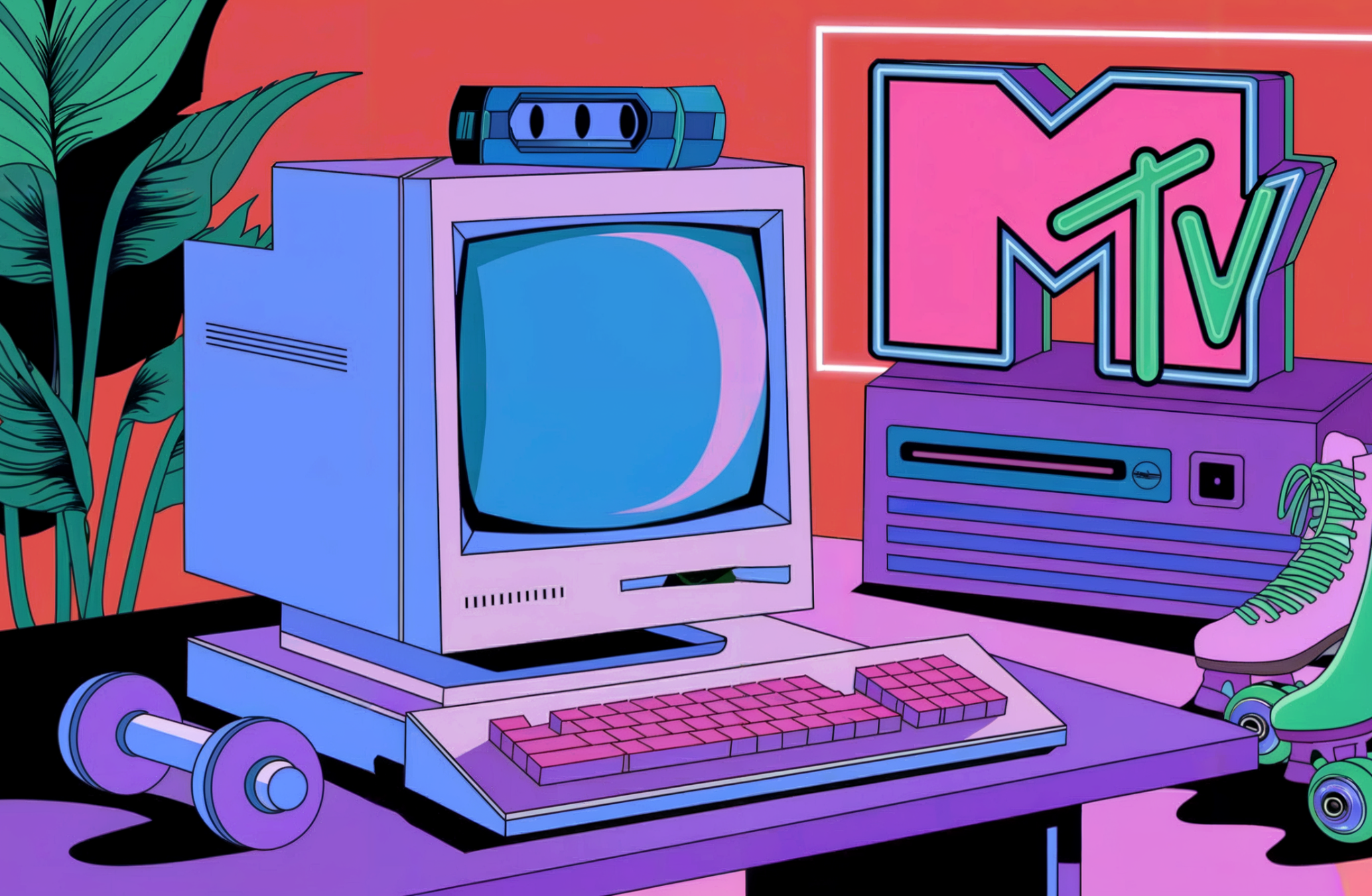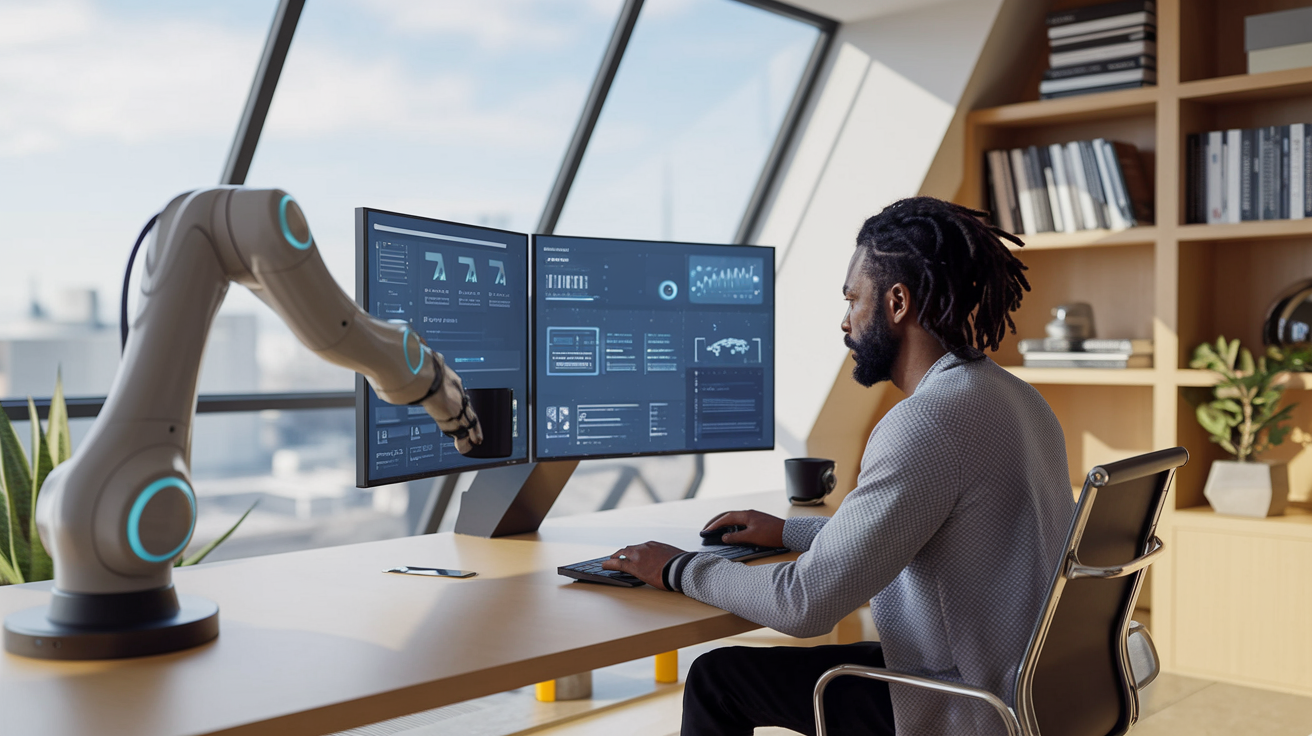Why I’m Making My Career AI-Ready

Image created via Ideogram
The year is 1984. Prince’s “When Doves Cry” is on repeat on MTV, “Indiana Jones” is dominating the box office, and everyone’s sweating in neon leg warmers to Jane Fonda’s workouts.
Meanwhile, in offices, computers are steadily gaining traction. Apple had set its sight on making typewriters obsolete, and by the time the ’90s rolled around, that vision had become reality. Typewriters were virtually extinct in the workplace, and office secretaries (and anyone else who relied on typewriters) had either learned how to use a computer or had been replaced.
Fast forward to 2024. Taylor Swift is the new pop culture icon. People aren’t glued to MTV anymore but to streaming platforms like YouTube and Netflix. Jane Fonda’s workouts have been replaced by TikTok dance crazes. Meanwhile, in the workplace, AI is the new disruptor. OpenAI’s CTO has already warned that AI could eliminate creative jobs that ‘shouldn’t have been there in the first place.’
In this post, I want to share why I’ve chosen to embrace AI and how I’m positioning myself to succeed in the midst of all the disruptive changes it’s causing.
1. The Writing is on the Wall
This 15-minute TEDx video from Jacob Rangel was the spark that ignited everything for me. In the video, Jacob shares how losing his copywriting job to AI motivated him to learn everything he could about it. Within four months, he and a co-founder launched an app, and today, he’s a Senior AI Prompt Engineer at Meta.
Jacob’s story hit home for me. Last spring, I was laid off from my full-time content writing job. While freelancing has kept me afloat, it hasn’t been easy. The job market is brutal right now, especially in tech, which has been hit hard by layoffs. Last year saw the worst wave of layoffs in tech since the dot-com crash of 2001. And over 100,000 tech jobs across more than 360 companies have been cut in 2024 alone, with no end in sight.
AI is the driving behind many of these job cuts, and companies like Meta aren’t even trying to hide it. Mark Zuckerberg has even admitted that they had to lay off employees to reinvest in “long-term, ambitious visions around AI.”
Content writers, like myself, are among the hardest hit. Writing is one of the easiest tasks for generative AI to handle. And while AI can’t yet replicate the nuance of a human writer, it’s getting better every day.
2. I want to ride the AI wave, not be swept away by it
Yes, AI is shaking things up, but it’s also creating a wealth of opportunities for those ready to adapt. AI is projected to add $13 trillion to the global economy by 2030, with 70% of companies expected to integrate AI technologies. This new era is opening doors to new job roles that didn’t exist just a few years ago — like AI Trainer, Sentiment Analyzer, AI Prompt Engineer, or AI Automation Specialist. Entire careers are on the horizon that we can’t even imagine yet, much like how the role of a social media manager was unheard of in the early 2000s.
We’re still at the beginning of the AI revolution, and those who adapt now will be at the forefront of this transformation. A friend of mine, who used to work as a creative director, is now a prompt engineer at an advertising agency in LA. She made this leap simply by creating AI videos and building her own GPT agents. Her journey is a perfect example of the kind of doors AI can open.
I truly believe the future belongs to those who recognize and seize opportunities. AI won’t replace me — people who use AI will. This shift is pushing me to upskill. I’m building on what I know while mastering new skills to ensure I remain competitive.
3. I want to commit for a year
I’m ready to go all in and commit to learning AI for a year. Back in 2016, I embarked on a similar journey to teach myself how to code using Free Code Academy. Everything was going smoothly for about four months, but then life started life-ing. My freelance work as a social media manager took off, and I became a digital nomad. My focus shifted to traveling, working, and finding clients, and before I knew it, “poof”, my dreams of being a coder had vanished.
Eight years later, my decision to quit coding is one of my biggest career regrets. I often wonder where I might be now if I had stuck with it. This time around, I’m determined not to let that happen again. Committing to a year of focused learning feels like the right move — a promise I’m making to my future self. It’s a small investment for the potential returns.

Image created via Ideogram
To stay accountable, I’ll be documenting my progress. I’ll be learning through courses on Make.com and using tools like Vapi, and Voiceflow, alongside tutorials on YouTube, to master building AI automation solutions.
4. I want to build solutions that solve business problems
As a writer, before I start creating content for my clients, I first need to understand their product, goals, and their audience’s pain points. This baseline knowledge helps me create content that not only informs but also solves problems.
This problem-solving mindset is what initially sparked my interest in coding. Like I mentioned in this post eight years ago, “I love the idea of building something that people can see, use, and interact with. There’s also the sense of accomplishment and satisfaction that comes from turning an idea and concept into something tangible.”
That same desire is what’s driving me to learn AI now. I don’t want to just learn how to use AI, I want to learn how to build no-code AI solutions that solve problems. Whether it’s automating tasks to save time, creating tools that enhance productivity, or developing solutions that address complex challenges.
With AI, the only limit is your mind. The career opportunities and the potential it unlocks to build and do exciting things are vast. There’s no reason to be afraid of AI as long as you’re willing to evolve with it. AI isn’t just a tool — it’s a doorway to new possibilities, and I’m ready to walk through it.
I’m excited to share my AI journey with you and I plan to post updates here regularly. You can also find me on LinkedIn or YouTube.
0 Comments Add a Comment?